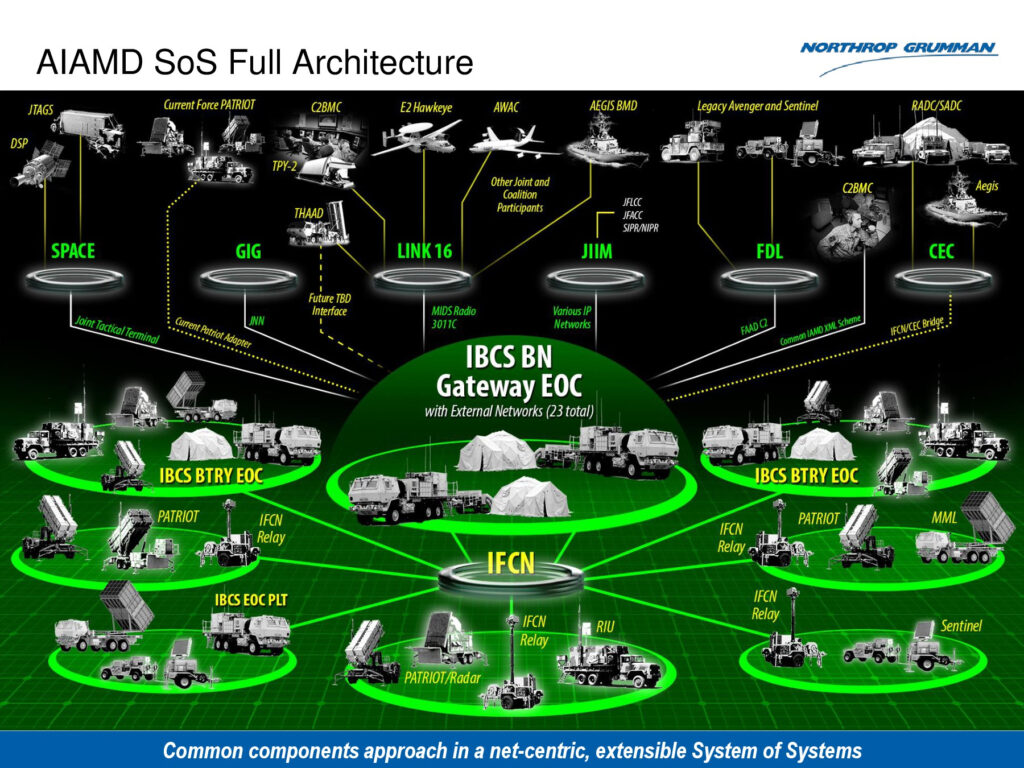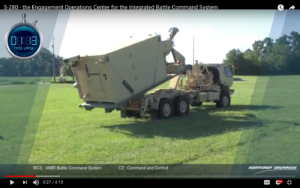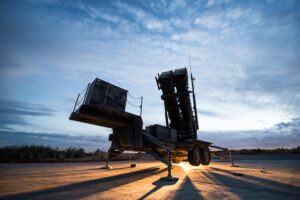Army Awards Northrop $289M For IBCS Missile Defense Network
Posted on

A simplified (yes, really) overview of the Army’s IBCS command-and-control network for air and missile defense.
UPDATED with contract details WASHINGTON: The Army just gave Northrop Grumman a $289.3 million vote of confidence in its much-criticized IBCS missile defense network, a major priority for major war. The award was announced — without even naming IBCS — on Friday, the last work day of the 2018 fiscal year.
IBCS is meant to link multiple Army air and missile defense (AMD) systems that weren’t designed to work together — Patriot, THAAD, Sentinel radar, and the future IFPC anti-aircraft/cruise missile system — into a single network. (It’s an awful nested acronym for IAMD Battle Control System, where IAMD in turn stands for Integrated Air & Missile Defense). The goal is to exchange targeting data so quickly and precisely over vast distances that any launcher in range can intercept incoming threats spotted by any radar. It’s a capability of significant value against North Korea and vital for a high-tech war against Russia or China, which have massive arsenals of increasingly precise (non-nuclear) ballistic and cruise missiles.
It’s also a tremendous software engineering challenge. Early trials of IBCS got scathing reviews from the Pentagon’s semi-independent Director of Operational Test & Evaluation (DOT&E), and the umbrella program for which IBCS is the command-and-control network — the Army-wide IAMD effort — was delayed by years. But Northrop has always insisted the problems were fixable and have been fixed, and the Army has tested their claims repeatedly over the last year-plus.
Apparently the Army was convinced. It also helps IBCS’s case that, last fall, Chief of Staff Mark Milley declared air and missile defense the Army’s No. 5 priority — one of the Big Six which the service is pushing to accelerate, if necessary at the expense of everything else in their budget. The Army had already sped up multiple Air & Missile Defense programs, and the AMD community has long said IBCS is its top modernization priority, essential to get more combat performance out of its existing, unconnected systems.
Last Friday’s contract announcement is surprisingly vague — it refers only to Northrop Grumman, a contract number, dollar totals, and other technicalities, without actually naming ICBS. But a Northrop press release this morning confirmed the award was for their missile defense network.
What do we know?
- The award is exercising an option on an existing contract (i.e. IBCS), with a value of $289,331,060 for unspecified “engineering, logistics, integration, test and evaluation, and program management activities necessary to develop and test improved software and production representative hardware.”
- The work should be complete by Dec. 31, 2019. $131,492,000 in 2018 funding was obligated — just in time before the end of the federal fiscal year. That leaves $157.8 million to be obligated in fiscal ’19, for which President Trump just signed the annual spending bill — also just in time, a major feat given the appropriations deadline’s been missed nine years running.
- The work will be performed in Huntsville, Ala. by Northrop’s Huntsville branch, Northrop Grumman Systems Corp. Huntsville, aka “Rocket City,” is home to Redstone Arsenal and the Army’s Space & Missile Defense Command (SMDC).
UPDATE Northrop got back to us with some additional details — we’ve bolded the big deliverables:
” The contract modification provides for the production of a new, mobile command and control shelter design and new Integrated Fire Control Network (IFCN) relay trailer design. As a part of these upgrades, we’re taking advantage of all the changes in processors and communications that have occurred since the first RDTE (Research, Development, Test, & Evaluation) units were delivered. From a software development perspective, the contract includes development of the next build of IBCS software from that successfully tested during Soldier Checkout Events (SCOE) conducted over the past year.”
Subscribe to our newsletter
Promotions, new products and sales. Directly to your inbox.


